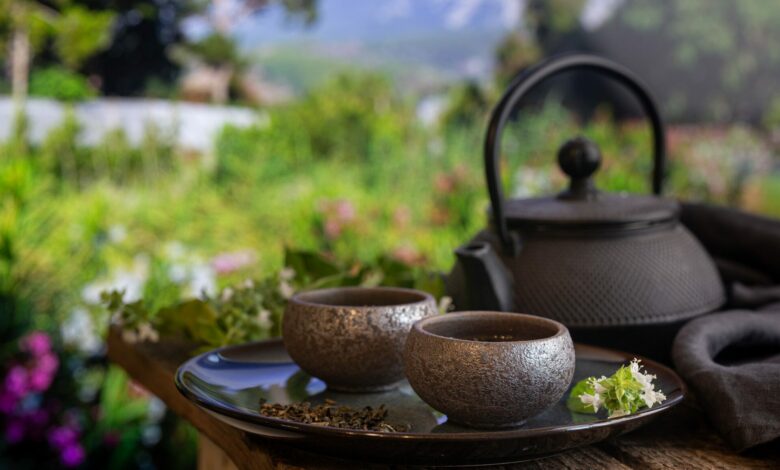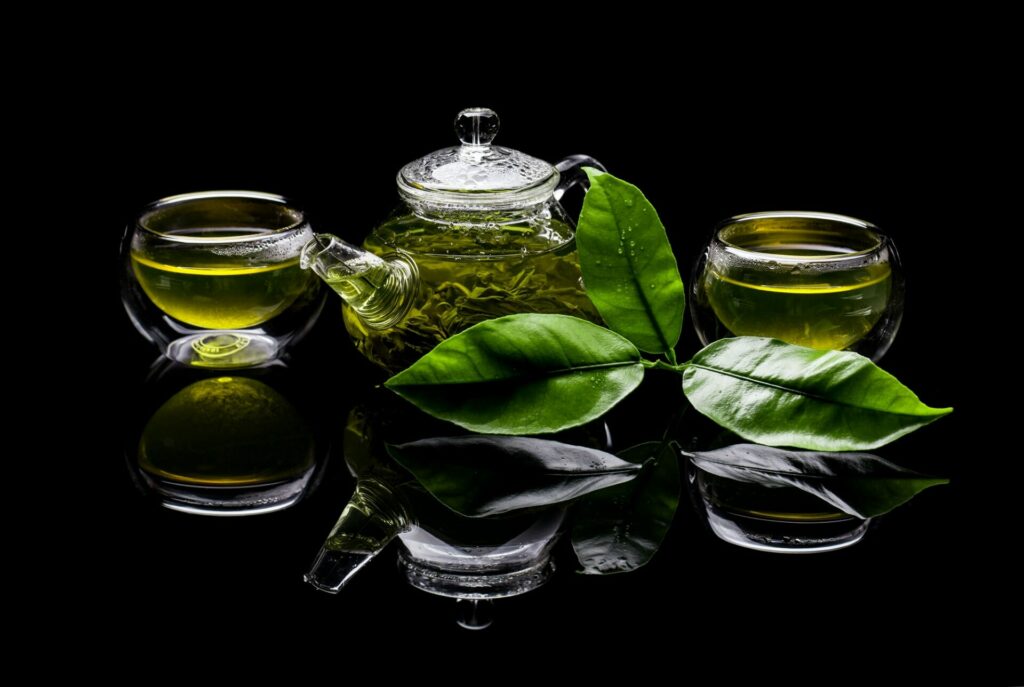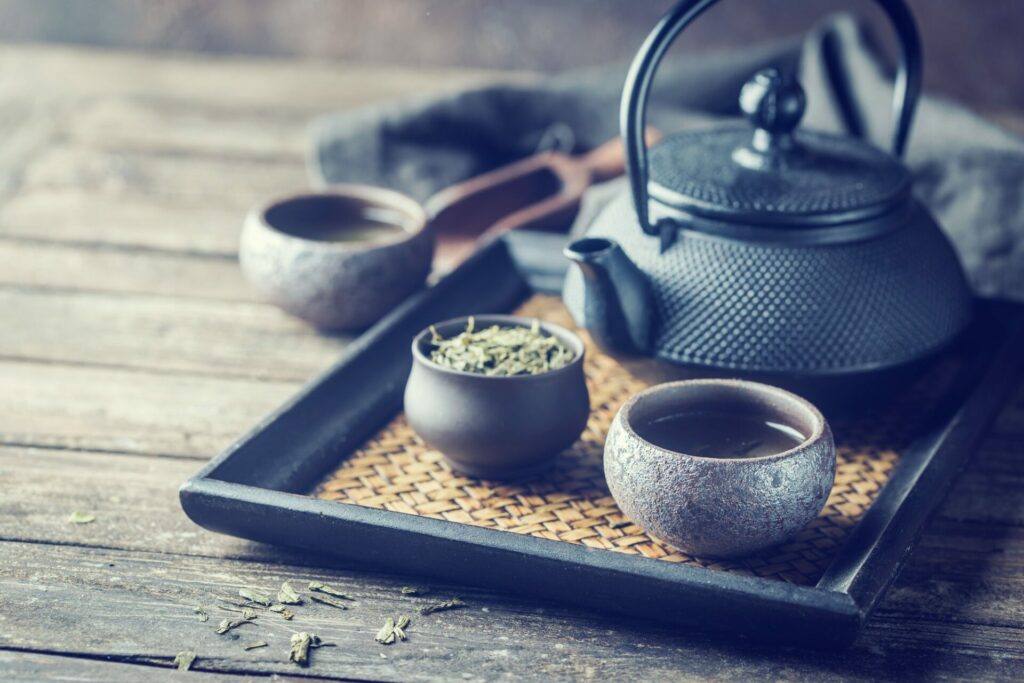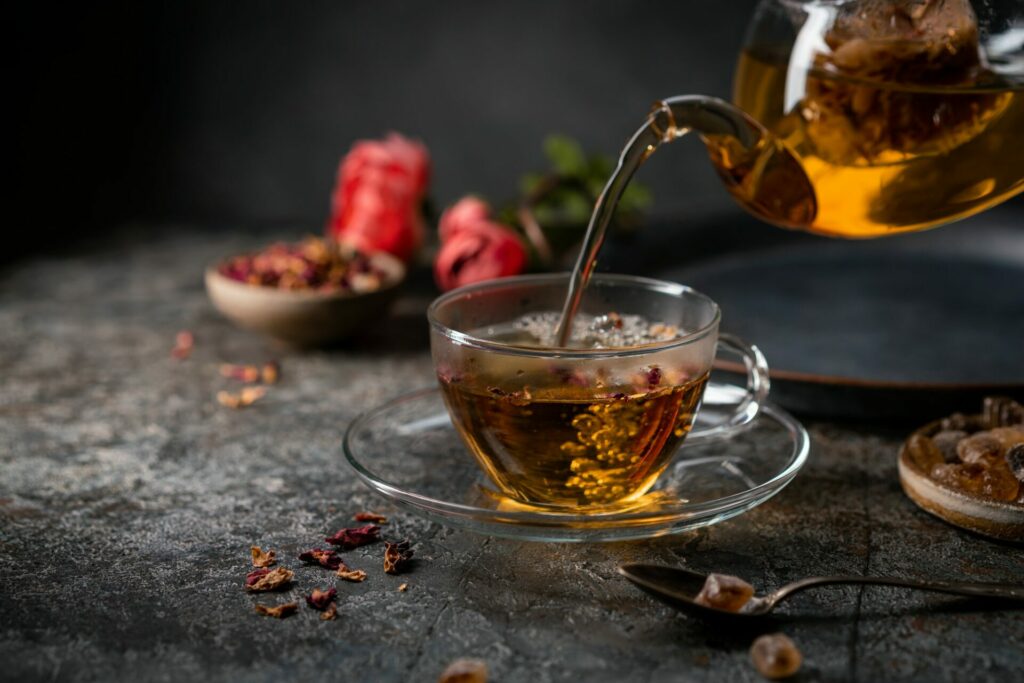
Green tea has emerged to become a new obsession amongst the people; and with the internet helping build on the notions about green tea, one can easily locate it, have knowledge about it and learn of its benefits. People believe that an iced americano in one hand while going to work or class is labelled as “cool” and it’s true. Sure, coffee is amazing but it is also unbeneficial once your body gets used to it. Besides, having green tea, an herbal beverage, is way better than having caffeine, don’t you think? Plus green teas are completely vegan and healthy. So, without further ado, let’s talk about the amazing green teas.
Lipton Green Teas
As far as green teas are considered, Lipton is the most prominent name that comes to head.

Lipton being one of the leading tea brands, they have worked on producing green teas in various flavours to suit their customers’ liking. They have up to 15 different flavours and the following article shall discuss them all.
Citrus Green Tea
For all those who like that slight hum of citrus in their beverages; this is a perfect summer day treat for a refreshing experience. Green tea in itself has a lot of benefits as does citrus. Rich in vitamin C, citrus helps reduce inflammation, improves gastrointestinal function and helps in reducing risks of diabetes.
Cranberry and Pomegranate Green Tea
Those who do not recognise Cranberry and Pomegranate juices in their very prime need to understand that both are extremely delicious and savoury drink choices. Pairing them up in a tea is an excellent decision that needs acknowledgement. While both have similar characteristics like anti-inflammatory properties, Cranberry juice is a lot helpful for women in maintaining their vaginal health and it is also proven to help with period cramps.
Mint Green Tea
Mint is a popular condiment when it comes to drinks or coolers, so imagine a mint flavoured tea. Mint is an extremely nutrient herb that has many qualities such as boosting one’s immune system, oral hygiene and even managing stress.
Chamomile Green Tea
Chamomile tea is one of the popular teas after green tea.

Thus, combining the benefits of chamomile and green tea into one provides one with the qualities such as reducing discomfort due to period, inflammation and better sleep.
Mandarin Orange Green Tea
Indulging your citrus liking while combining it with a familiar, homely orange flavour, this is the perfect tea. Having a child-like nostalgia to it, it proves to be one of the most refreshing of the teas.
Turmeric and Ginger Tea
Have a cold? No worries because a blend of turmeric with ginger in a soothing tea would definitely soothe your pains. Ginger with a hint of heat and spice, combined with turmeric benefits can be characterised by the properties of this tea which are digestive health, menstrual pains, anti-inflammation, etc.
Mango and Pineapple Green Tea
A burst of the tropical region on your taste buds, this tea combines two of the most favoured tropical fruits creating a perfect blend for the fellow tropical-lovers. Both fruits being rich in various vitamins such as A, C and K, the tea is highly nutritious.
Peach Green Tea
A type of green tea that is sweet and floral in a perfect tea blend. The taste is refreshing and new in a tea.
Raspberry Green Tea
Raspberry green tea has similar taste notes as compared to the astringent flavour of the japanese teas. It is helpful with menstrual pains, inflammations, etc.
Mixed Berry Green Tea
Like a fresh glass of smoothie, it is a perfectly blended mixture of berries into a tea.
Lipton is one out of many brands that produce and disseminate green tea in various flavours. As far as the prices are considered, it is dependent on the amount one chooses to buy. The following list discusses the prices of various lipton green teas.
Lipton Green Tea Price (25 units)/ Rs. 170
Lipton Green Tea Price (loose tea)/ Rs. 155
East Asian Teas
Having discussed the popular green tea flavours, let us dive into a cross-Asian exploration of green tea with Japan and China. As it has been established, south-Asian countries are prominent for their many things which also includes tea. In countries such as Japan and Korea, tea is called ‘cha’ which can be related to ‘chai’ in hindi or ‘cha’ in Gujarati. While that all remains to be true, let us look into what these countries have to offer in terms of tea.
Sencha
Hailing from Japan, Sencha is a term used to refer to the first ever tea leaves picked in February. Being the first leaves to be picked, Sencha leaves are new and tender and the flavour note it gives off is fresh and herbal. The first sip of the tea leaves an astringent taste which evolves from sour to sweet to savoury.
Matcha
Everyone is known for quickly connecting the dots between Matcha and Japan. When talking of Japanese teas, matcha is what one first considers.

It should be no secret that matcha comes from green tea leaves. After being picked, the leaves are steamed, roasted and stone-ground to form the powder. Aside from being used as tea, matcha is also used in pastries, cakes and cookies.
Fukamushicha
Another type of Japanese green tea, it is brewed with the same tea leaves as Sencha, the only difference being the amount of time the leaves are steamed for which is twice as much as compared to Sencha. This process essentially makes a difference in the flavour of the tea making it less astringent and more sweet.
Kukicha
The name kukicha refers to the stick-like shape of what is used as tea leaves. The stems and twigs discarded during the processing of sencha and matcha are essentially used in kukicha. Since tea leaves and stem have the same nutrient, they largely taste similar but kukicha is not something that is offered to the guests; it is for personal use.
Bancha
After the tender leaves are picked for sencha in February, the later picked leaves are Bancha. Unlike sencha, Bancha is also inclusive of the stem along with the leaves. Since it is picked after sencha, it has a distinctly more astringent and less fragrance.
Gyokuro
Even though it is categorised under sencha, Gyokuro is a different type altogether. Differing in the method of cultivation, Gyokuro is grown under shade rather than under the beaming sun.
Hojicha
Unlike most of the Japanese teas which are steamed, Hojicha has to go an additional step of roasting. In Japanese, the word ‘hoji’ translates to roast. It has a nutty taste with a toasty aroma.
Genmaicha
Literally translating into ‘brown rice tea’, it is exactly what it sounds like. Unprocessed brown rice is soaked, steamed and roasted before being mixed with a type of green tea- typically sencha- in equal proportions. The result of this is a nutty-toasty tea with a hint of that savoury flavour.
Longjing(Dragonwell)
China’s most famous and arguably the oldest style of green tea, Dragonwell leaves are shaped like a flattened feather. The tea has a sweet-pea flavour with a hint of roasted chestnut aroma. The unique shape of the leaves is obtained by pressing them against a hot wok.
Bi Lou Chun
The name of the tea literally translates to ‘green snail spring’ which perfectly describes the rolled shape of the tea leaves which are hand-rolled unlike the flattening of dragonwell. The flavour note of this tea gives off a gentle nutty flavour which is almost creamy unlike Longjing.
As one can see, there is no lack of teas in the south-Asian nations as they are also one of the oldest originators of tea. As far as the prices of each of these teas are considered, since they are not traditionally grown in India, they could be found on the internet with a price range of anything between Rs. 500 to 1000. The price of teas are as such due to their place of cultivation.
Floral Teas
Green teas are sorts of herbal teas and one cannot talk about herbal teas without mentioning floral teas. Let us look into this garden of aromas to discover a tea that suits your taste.
Jasmine Tea
The tea leaves for a jasmine tea are scented by a tray of jasmine blossoms underneath a tray of the tea leaves to infuse the scent into the tea. In some cases the jasmine blossoms are directly mixed with the tea leaves, mostly a green tea base. It is shown to help with reducing stress.
Rose Tea

Often paired with a black tea base, rose petals are often blended with the tea for its floral notes. It is known to help with anxiety and inflammation.
Lavender Tea
Like in most floral teas, lavender is also blended with the tea leaves in smaller quantities as it is too strong on its own. It is known for its calming properties which help with stress and better sleep.
Hibiscus Tea
While most floral teas are light and delicate, hibiscus has a fruity note to it which could remind one of cranberry juice in a way. The fruit note observed in hibiscus is like citrus which proves that it is rich in vitamin C.
Chamomile Tea
A classic floral tea, chamomile tea is light, soothing with a sweet and honey-like natural sweetness. It helps with stress and sore throats.
Benefits of Green Tea
Now let’s talk about green tea benefits (green tea ke fayde).
- Alleviates anxiety and stress
- Helps with protection against cognitive decline
- Lowers cholesterol
- Lowers blood pressure
- Reduces risks of strokes and coronary diseases
- Boosting immune system
- Has been shown to have anti-carcinogenic effects
The diverse world of green tea offers a spectrum of aromas and flavours to explore through for all sorts of lifestyles. From the delicate notes of Sencha to the Floral notes of Chamomile, each tea has a unique story. Aside from providing one with an array of flavours, green tea is also extremely beneficial and promotes potential health benefits.
Whether one savors the simplicity of a classic or exploring the wide range of teas, the world of green tea appreciates all nuances and complexities in each cup of tea. Embrace the ancient traditions and the modern innovations; this makes green tea a timeless beverage not just a drink but an experience that connects the past to the future while tracing the lines of the present. So, raise your teacups and toast to the delightful world of green tea.



